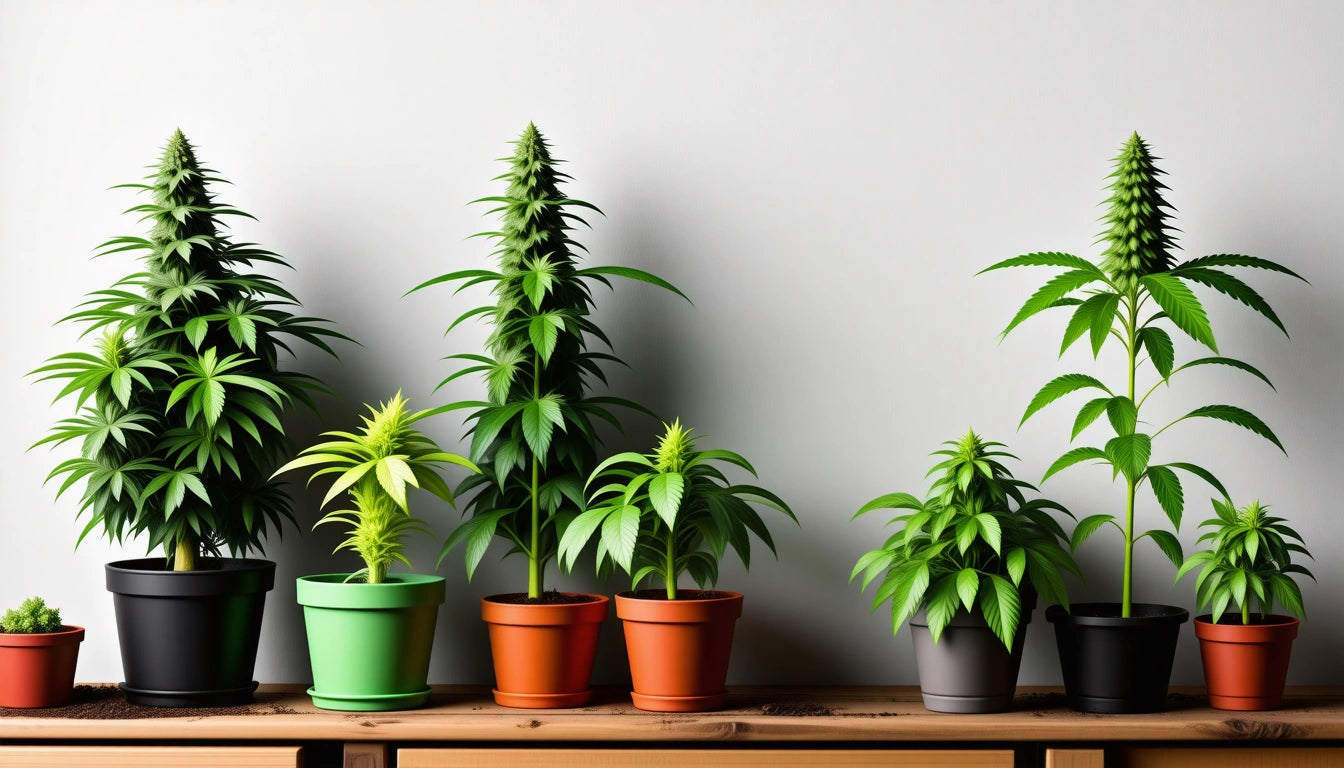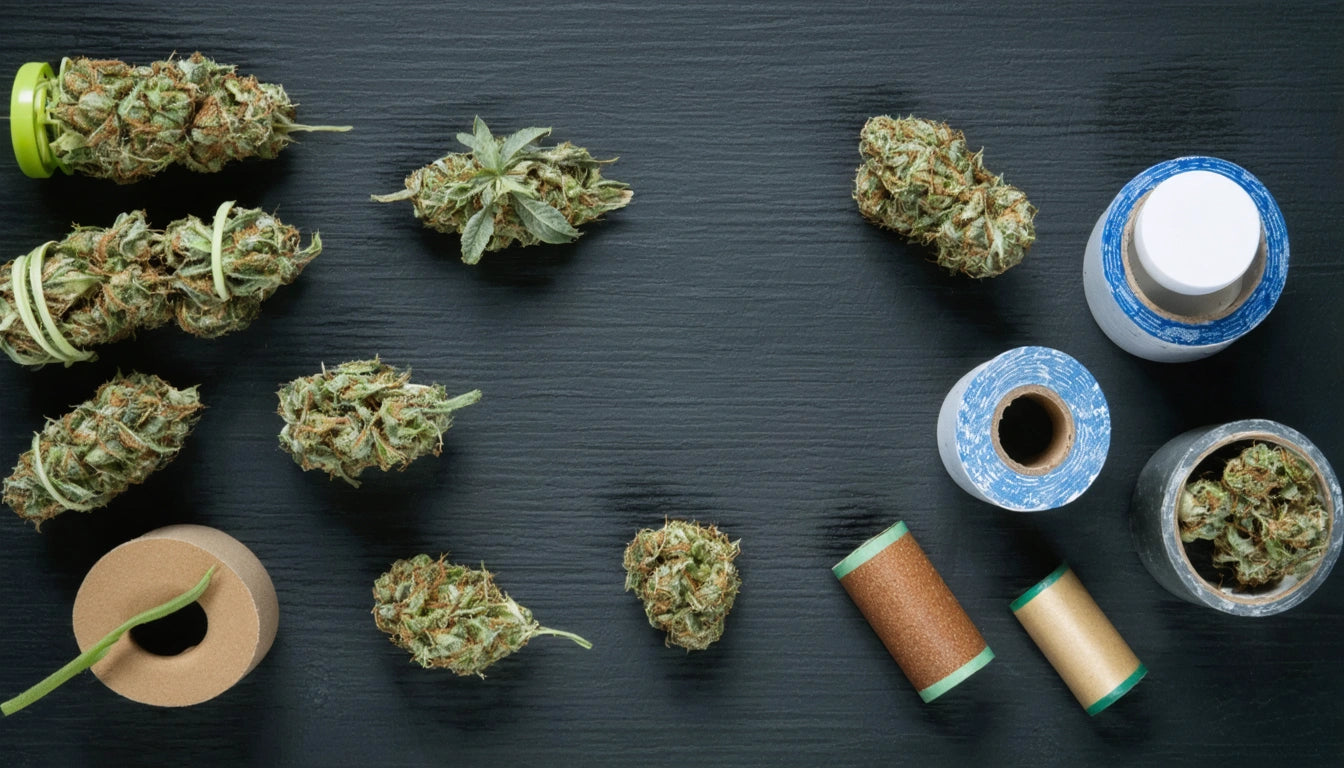Table of Contents
- The Basics of Growing Marijuana at Home
- Selecting the Right Strains and Seeds
- Creating the Optimal Growing Environment
- Soil Selection and Nutrient Management
- Lighting Requirements for Cannabis Plants
- Watering and Humidity Control
- Common Problems and Troubleshooting
- Harvesting and Curing Your Marijuana
- Advanced Growing Techniques for Experienced Cultivators
Comprehensive Guide to Growing Marijuana at Home: Tips and Techniques
Growing marijuana at home can be a rewarding experience that provides a steady supply of quality cannabis tailored to your preferences. Whether you're looking to grow for personal medicinal use or as a hobby, understanding the fundamentals of cannabis cultivation is essential for success. This guide walks you through everything you need to know about how to grow marijuana plants from start to finish.
The Basics of Growing Marijuana at Home
Before diving into marijuana cultivation, it's important to understand the plant's life cycle and basic requirements. Cannabis plants typically go through several distinct phases: germination, seedling, vegetative growth, and flowering. Each stage requires specific care to ensure healthy development.
For beginners learning how to grow marijuana, start with these essential supplies:
- Quality seeds or clones
- Growing containers (fabric pots are recommended)
- Nutrient-rich soil or growing medium
- Proper lighting (LED, HPS, or natural sunlight)
- Ventilation equipment
- pH testing kit
- Thermometer and hygrometer
Understanding your local laws regarding home cultivation is also crucial before you start growing marijuana at home. Research your area's regulations on plant count limits and home growing restrictions.
Selecting the Right Strains and Seeds
Choosing the right strain is one of the most important decisions when learning how to grow a marijuana plant. Consider these factors when selecting:
Indica vs. Sativa vs. Hybrid
Indica strains typically grow shorter with broader leaves and are often easier for beginners. Sativas grow taller with narrower leaves and longer flowering periods. Hybrids combine characteristics of both, offering balanced growth patterns and effects.
Autoflowering vs. Photoperiod
Autoflowering strains automatically transition to flowering regardless of light cycle, making them ideal for beginners learning how to grow marijuana for the first time. Photoperiod strains require specific light schedules to trigger flowering, offering more control but requiring more attention.
Quality seeds are the foundation of successful cultivation. Look for reputable seed banks that provide detailed strain information and germination guarantees. For a comprehensive approach to starting from seeds, check out our step-by-step guide on growing cannabis from seeds.
For best results when growing marijuana plants, always start with high-quality genetics from reputable sources and maintain detailed records of your growing process to refine your techniques over time.
Creating the Optimal Growing Environment
The environment plays a crucial role in how to grow marijuana successfully. Cannabis plants thrive in controlled conditions with proper temperature, humidity, and air circulation.
Indoor vs. Outdoor Growing
Indoor growing gives you complete control over the environment but requires more equipment and higher energy costs. Outdoor growing leverages natural sunlight and air but is subject to weather conditions and seasonal limitations. For those interested in indoor cultivation, our ultimate guide to growing cannabis indoors provides detailed information.
Temperature and Humidity
Cannabis plants generally prefer temperatures between 70-85 °F (21-29 °C) during the day and slightly cooler at night. Humidity requirements change throughout the growth cycle:
- Seedlings/clones: 65-70% humidity
- Vegetative stage: 40-70% humidity
- Flowering stage: 40-50% humidity
- Late flowering: 30-40% humidity
Maintaining proper humidity levels can be challenging, but using humidity control packs can help stabilize moisture levels and prevent mold issues during both the growing and curing processes.
Soil Selection and Nutrient Management
When learning how to grow marijuana in pots or other containers, soil quality is paramount. Cannabis thrives in well-draining, slightly acidic soil (pH 6.0-7.0) rich in organic matter.
Soil Types
Pre-mixed cannabis soils are available commercially and are often the best choice for beginners. These soils typically contain a balanced mix of nutrients and amendments like perlite for improved drainage. More experienced growers might create custom soil mixes tailored to specific strains.
Nutrient Requirements
Cannabis plants require different nutrient ratios during various growth stages:
- Vegetative stage: Higher nitrogen (N)
- Early flowering: Balanced NPK (Nitrogen, Phosphorus, Potassium)
- Late flowering: Higher phosphorus and potassium, lower nitrogen
Over-fertilization is a common mistake when learning how to grow marijuana plants. Always start with half the recommended nutrient strength and increase gradually based on plant response.
Lighting Requirements for Cannabis Plants
Light is crucial for photosynthesis and directly impacts plant growth and yield. Understanding lighting requirements is essential when learning how to grow marijuana.
Light Cycles
For photoperiod plants:
- Vegetative stage: 18-24 hours of light per day
- Flowering stage: 12 hours of light followed by 12 hours of uninterrupted darkness
Autoflowering strains can be kept on a consistent schedule of 18-24 hours of light throughout their lifecycle.
Light Types
Different lighting options include:
- LED: Energy-efficient with customizable spectrums
- HPS/MH: High intensity with excellent yields but higher heat output
- CFL: Budget-friendly for small grows or seedlings
- Sunlight: Free and full-spectrum for outdoor growing
For those wondering how to grow hydroponic marijuana, specialized lighting setups are particularly important since plants won't receive any nutrients from soil.
Watering and Humidity Control
Proper watering is one of the most challenging aspects of learning how to grow marijuana. Cannabis prefers a cycle of wet and dry periods rather than constant moisture.
Watering Best Practices
Water thoroughly until you see runoff, then wait until the top inch of soil feels dry before watering again. Factors affecting watering frequency include container size, plant size, environmental conditions, and growing medium.
For advanced growers interested in how to grow hydroponic marijuana, water quality and nutrient solution management become even more critical.
Common Problems and Troubleshooting
Even experienced growers encounter issues. Here are common problems when learning how to grow marijuana and their solutions:
Pest Management
Common cannabis pests include spider mites, aphids, and fungus gnats. Preventative measures include:
- Regular plant inspection
- Maintaining clean growing areas
- Introducing beneficial insects
- Using organic pest management solutions
Disease Prevention
Powdery mildew, root rot, and botrytis (bud rot) are common diseases. Prevention strategies include:
- Proper ventilation and air circulation
- Avoiding overwatering
- Maintaining appropriate humidity levels
- Regular pruning to improve airflow
For more detailed information on problem-solving and prevention, refer to our comprehensive guide for beginners.
Harvesting and Curing Your Marijuana
Knowing when and how to harvest is crucial for potency and flavor. Most cannabis plants are ready for harvest when:
- Pistils (hair-like structures) have darkened and curled in
- Trichomes (resin glands) have turned cloudy or amber
- Fan leaves have started to yellow and drop
After harvesting, proper drying and curing are essential steps:
- Trim excess leaves from buds
- Hang branches upside down in a dark room (60-70 °F with 45-55% humidity) for 7-10 days
- When stems snap rather than bend, transfer buds to glass jars
- Open jars daily for the first two weeks to release moisture
- Continue curing for at least 2-4 weeks for optimal flavor and potency
Advanced Growing Techniques for Experienced Cultivators
Once you've mastered the basics of how to grow marijuana, consider these advanced techniques to improve yields and quality:
Training Methods
Plant training techniques like Low-Stress Training (LST), Screen of Green (SCROG), and topping can maximize light exposure and increase yields. These methods require practice but can significantly improve harvest results.
Specialized Growing Systems
For those interested in how to grow hydroponic marijuana, various systems like Deep Water Culture (DWC), Nutrient Film Technique (NFT), and Ebb and Flow offer soilless alternatives with potentially faster growth and higher yields.
Remember that growing marijuana is both a science and an art. What works for one grower or strain may not work for another. Keep detailed records, be patient, and don't be afraid to experiment with different techniques as you gain experience.
For more comprehensive information on both indoor and outdoor cultivation methods, explore our guide covering indoor and outdoor techniques to expand your growing knowledge.











Leave a comment
All comments are moderated before being published.
This site is protected by hCaptcha and the hCaptcha Privacy Policy and Terms of Service apply.